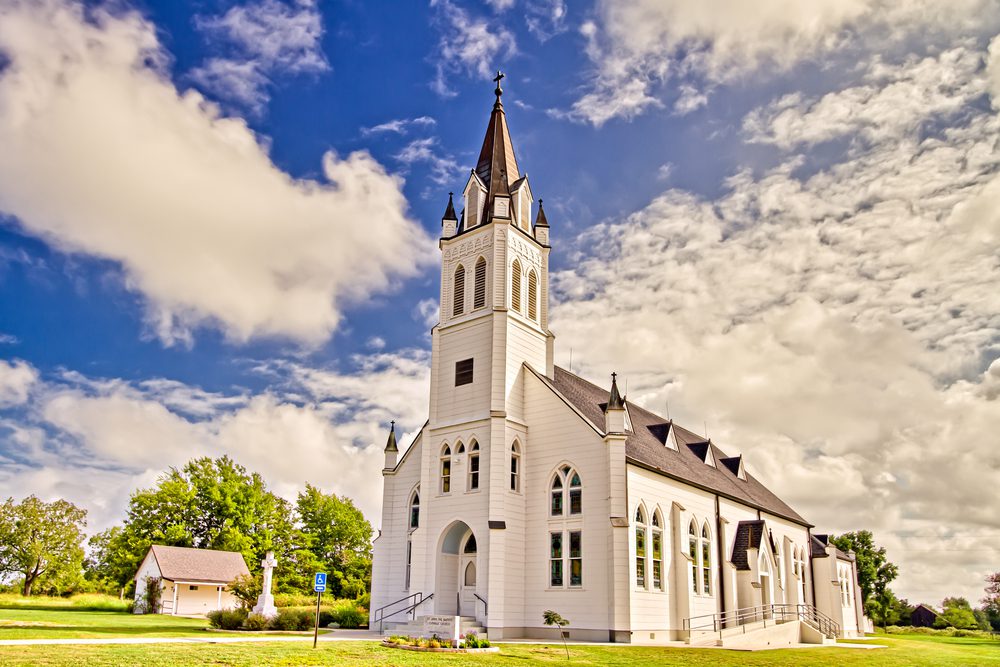
Churches face a lot of risks, and a lot of the time they do so with limited funds and resources. There are five key areas insurance companies are looking at when it comes to insuring churches in 2023. The good news is most churches can properly address these issues even on a limited budget. Let’s dive into the five tips for your church insurance in 2023.
One area of insurance we focus specifically on is church insurance. From small community congregations to large multi-location churches, we’ve built insurance programs for each level of your church.
So…what does your church need to be on the lookout for in 2023?
#1 – Reviver Statutes Are Creating More Church Sexual Abuse Claims
We talk about this more in-depth in another video, but Reviver Statutes are creating more sexual abuse claims. Long story short, a reviver statute is state legislation that allows adult survivors of childhood abuse to bring forward civil claims even after the statute of limitations has passed. Kentucky legislation put this in place as well. How your church can prepare for this in the future and protect the youth at your church largely depends on the controls your church has in place. There are a lot of questions your church needs to make sure they’re handling properly here. The cost to implement proper safety controls is very, very low, and every church should make this a top priority.
#2 – Make Your Old–or New–Church Buildings Smart
A lot of churches, especially in smaller communities, have older houses of worship. This means a lot of them have original electrical, plumbing, and other systems that are likely deteriorating. With limited funds, there may be even more strain on your church to address this efficiently. While larger churches probably have people in and out the doors more daily, smaller churches likely only see foot traffic 2-3 days a week max. Let technology be your friend here.
Covid amplified this with live-streaming services becoming the standard, but I’m talking about increased security and monitoring. At the very least, it’s a great idea to have cameras on the outside of your church buildings to monitor the activity of all those coming and going, especially when it’s not church time. You can keep a closer eye on suspicious activity, intruders, or even simple slips and falls of guests. Taking this a step further, it would be a great idea to have cameras inside in high-traffic areas.
Other smart devices your church should consider, especially those I mentioned that only see foot traffic 2-3 days a week max, is installing devices to monitor leaking or standing water. If that refrigerator, HVAC, or water heater leaks on a Monday at 2 AM how long is it going to leak before someone discovers it? Having sensors tied to a central monitoring system could allow alerts to be sent out to multiple church leaders, and the water could be shut off within minutes rather than days.
Bonus “Smart” Tip
Set your HVAC systems up on a mobile app. Make sure your heat and air are running on a schedule based on foot traffic. With rising heat and electric costs, this is one area where your church can save some real money. Plus, having access to it on an app allows specific church members to monitor the temperature of the buildings. It would be way better to know on a Thursday if the heat or air conditioning gave out, rather than your congregation to find out as they’re arriving at church Sunday morning.
#3 – Cybersecurity for Churches
This may seem unrelated for smaller, older churches, but a lot of victims of cyber crimes are older generations. Cybercriminals could easily use a phishing attempt. This could be something like using the email address of your pastor, treasurer, etc. to email church members requesting money for urgent needs.
A lot of churches are moving to e-giving. If your church accepts credit cards, bank account info, etc. through your website your church needs to make sure the proper controls and encryption are in place here. For larger churches with many employees, your church needs to ensure they have the proper internet use policies, trainings, and multi-factor authentication.
#4 – Make Sure Church Insurance Property Values Are Adequate
Yes, this one will cause your insurance premium to rise some, but the cost of not do this properly could sink the future of your church. The last thing you want is to need a successful GoFundMe page hoping to raise a couple hundred thousand dollars because you didn’t want adequate building limits that were going to raise your premium by a couple hundred dollars. With the increased cost of building materials plus factoring in inflation, there’s a good chance your church couldn’t be built back for the value on your policy.
#5 – Catastrophes and Church Insurance
This one is pretty much out of your hands but has to deal with catastrophes. For Kentucky and the Midwest specifically, this focuses more on tornados, major hail events, and in some areas wildfires. This is why number 4 is so important. Another one not on everyone’s radar just happened at Christmas. The amount of damage from frozen pipes across Kentucky and the Midwest was catastrophic.
Next Steps
If you have more questions about your church insurance program you can give us a call, or you can email me at asheridan@rbisomerset.com. Check out our other videos for your church insurance. You can find them here on our website, or on our YouTube Channel.
We look forward to working with you.

